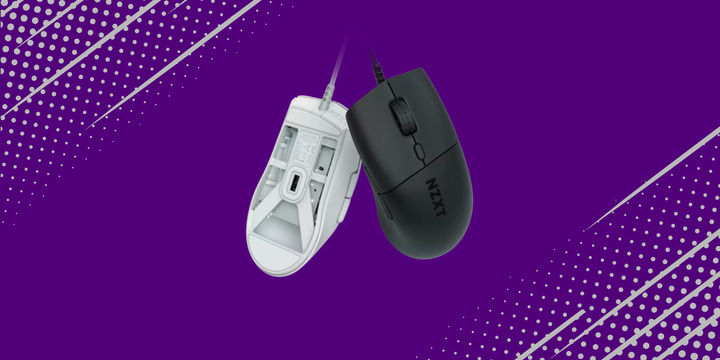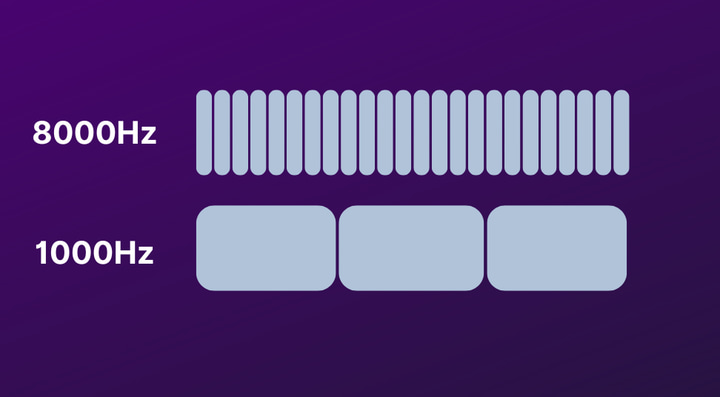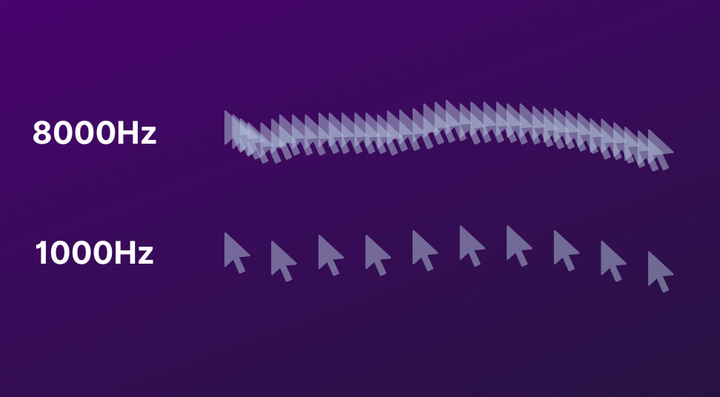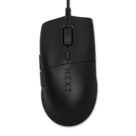Why to Get a High Polling Rate Mouse on a Budget

Sponsored by NZXT

If you’re even a bit into gaming mice, you’ll have heard of mouse polling rates above 1000Hz. After the lightweight race, higher polling rates are now the name of the game in the world of gaming mice. In combination with optical switches (another recent advancement), manufacturers are creating mice that are more responsive than ever.
Until now, this tech was really only reserved for flagship mice that cost far north of $100. This meant that gamers on a budget pretty much had no chance to use this technology unless they managed to snag a secondhand deal somewhere. Luckily, those days are over. Today, brands such as NZXT are offering mice with flagship specs for budget prices. In this article, we’ll go over why that is such a big deal, and why you should consider higher polling rates.
Why To Get A High Polling Rate Mouse
What Is Polling Rate?
In case you’re not familiar with polling rates: the polling rate of a mouse indicates how often the mouse sends a signal to the PC. This is indicated in Hertz (Hz). A mouse that’s running at 500Hz sends its information (position, whether a click has been made, …) to the computer 500 times per second. A mouse running at 1000Hz does so 1000 times per second, and so on.
When it comes to polling rates, higher is better. The more your mouse is sending its information to your PC, the more responsive it’ll feel, and the smoother the movements that you make will become.

Why Is Higher Better?
To illustrate this with an extreme example, imagine a mouse that only sends a signal once every second. This would make it impossible to move your crosshair smoothly and accurately since the mouse is only sending one snapshot of your moves per second. Furthermore, you’d probably miss a lot of crucial shots due to the mouse registering inputs too late.
Now multiply this one input per second by 8000. As you can probably imagine, mouse movements will be translated to the PC with a lot more precision.
Obviously, there is no such thing as a gaming mouse with a polling rate of 1Hz, but upping the responsiveness of your mouse by going for a higher polling rate is definitely worth it. To say this with numbers: a mouse polling at 500Hz (this was the standard for a while) has a response time of 2ms. A mouse at 1000Hz (which is the ‘modern standard) has a response time of 1ms. A mouse polling at 8000Hz has a response time of just 0.125ms.
Going Beyond Response Times
A lot of users focus only on response times when they consider the advantages of higher polling rates, but that’s an error. Given the fact that a mouse at 8000Hz is sending its position eight times as often as a mouse at 1000Hz, you can also get improvements with tracking. This is only logical: the more a mouse reports its current position, the more precise it’ll be.
To illustrate this with another exaggerated example: image you put a tracker on a pet. If this tracker sends you the position of the pet once every 15 minutes, you can get a rough estimate of where your pet is going, but not much more than that. However, if that tracker sends you the position of your pet every 10 15 seconds, you can track where it’s going pretty much in real time.
It’s an often underrepresented advantage of higher polling rates, but the improved tracking might be one of the biggest advantages if you ask us.

Other Modern Innovations
High polling rate sensors aren’t the only thing that separates a top tier gaming mouse from a regular one. Another component that aids in reducing the overall latency of a mouse can be found underneath the buttons. Optical switches (see optical mouse switches vs mechanical mouse switches) have been on the rise in gaming mice, and that’s for a number of reasons. Firstly because they -as mentioned- further reduce the overall latency of a mouse. Secondly because they’re a lot more durable than traditional mechanical switches. And thirdly because there’s no risk of optical switches accidentally double clicking.
What Do The Pros Say?
If we look at CS2, which is arguably the most popular competitive shooter on the market, we see that 32% of pros have already switched over to higher polling rates. Given how notorious the CS2 scene is for being resistant to change (up until a few years ago, 500Hz was still the most used polling rate in pro Counter-Strike) this is definitely an interesting number.
If you’re a pro or you’re looking to maximize your competitive performances, there are literally no downsides to using higher polling rates. If you’re on a wireless mouse, you’ll have to charge your mouse more often due to the fact that higher polling rates require more power, but other than that there are no compromises to be made.
Around 32 %
of currently active CS2 pros are using 2000+Hz polling rates
Fully Utilizing Your High Polling Rate Mouse
Do note that you need a strong setup in order to reap the benefits of high polling rate mice. You need a monitor that’s capable of producing at least 240 frames per second (see ‘what is framerate‘) and a PC that can reliably drive enough frames towards said monitor. This is of course of no consideration for the pros: they are almost always on the best PCs money can buy since they don’t want to handicap themselves, but if you’re more of a casual gamer it’s good to know this information.
Introducing The NZXT Lift 2
As we mentioned earlier on in the article, gaming mice with ‘pro tier specs’ usually make quite a big dent in the wallet. Seeing a mouse with a 3395 sensor, 8000Hz polling rate, optical switches, and a weight of ~60 grams usually means that you should be ready to spend well over $100 if you want to get it for yourself.
Luckily, manufacturers are now also starting to look towards the more budget-oriented corner of the market. The NZXT Lift 2 packs all of today’s top tier features at a price that’s well below the $100 mark. Sure, it comes with a wire attached to it, but it’s a flexible and lightweight cable that shouldn’t get in the way. As an added bonus, you won’t ever have to charge your mouse.
The Lift 2 marks an interesting waypoint in the gaming mouse market, as it houses all of today’s top notch components without the price that’s usually associated with mice like these. For an MSRP of $49.99, you get:
- 3395 sensor
- Optical switches
- 8000Hz polling rate
- PTFE feet
- Lightweight design
- Paracord cable
The Lift 2 is also available in a symmetrical version, called the Lift 2 Symm.
You can find out more about the Lift line of mice on NZXT’s website.
NZXT Lift 2 Ergo
If it’s value you’re looking for, the NZXT Lift 2 Ergo is difficult to beat. It’s got all of today’s bells and whistles (such as a 3395 sensor and optical switches) packed inside a well-built 61 gram package.
Pros
- Pro-level specs for a budget price
- Good build quality
- Nicely implemented (optical) switches
Cons
- Large shape might not suit everyone
- Exterior parts of the shell can grind on softer mousepads or when applying a lot of pressure on the mouse
Specs
| Sensor | PMW 3395 |
|---|---|
| Polling Rate | 125 / 250 / 500 / 1000 / 2000 / 4000 / 8000 Hz |
| Button Switches | Optical Switches |
| Connection | Wired |
| Shape | Ergonomic |
| Length | 12.84cm |
| Height | 4.14cm |
| Weight | 61g |
| Width | 6.51cm |




